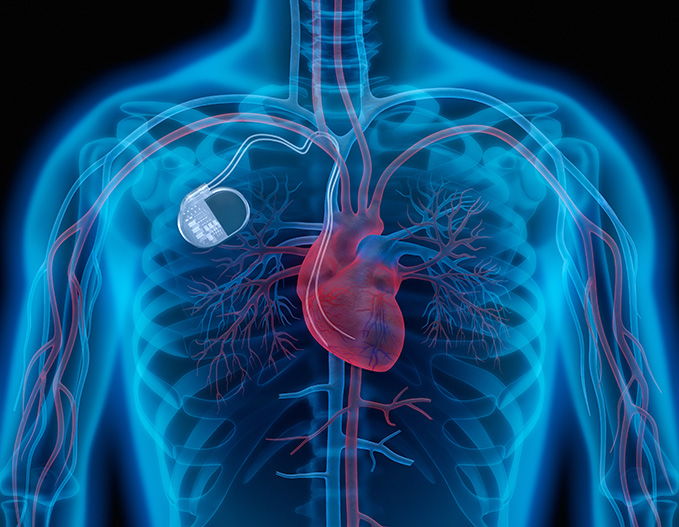
Some consumer electronic devices, such as certain cell phones and smart watches, include high field strength magnets, which recent studies have shown may cause certain implanted medical devices to switch to “magnet mode,” and suspend normal operations until the magnet is moved away from the medical device.
Many implanted medical devices are designed with a “magnet mode” to allow for safe operation during certain medical procedures such as undergoing an MRI scan.
These safety features are typically engaged by physicians with the use of a high field strength magnet that is placed near the implanted device placing it into a “magnet mode.”
Removal of the magnetic field causes the device to return to normal operation.
Precautions for Patients with Pacemakers and Other Implanted Medical Devices
The Food and Drug Administration (FDA), recommends patients keep any consumer electronic devices that may create magnetic interference, including cell phones and smart watches, at least six inches away from implanted medical devices, in particular cardiac defibrillators.
Many implanted medical devices have FDA-approved information written for patients (patient labeling), which cautions patients to keep all cell phones and smart watches at least six inches from the implanted medical device.
(A surprising study by several Electrophysiology physicians shows the impact of placing an iPhone 12 over an implanted ICD. Check out the results in this 2 minute video summary. Courtesy of Hospital Medicine Seminars and YouTube. Posted on Apr 4, 2021.)
People with implanted medical devices may want to take some simple precautions, including:
-
Keep the consumer electronics, such as certain cell phones and smart watches, six inches away from implanted medical devices.
-
Do not carry consumer electronics in a pocket over the medical device.
-
Check your device using your home monitoring system, if you have one.
-
Talk to your health care provider if you are experiencing any symptoms or have questions regarding magnets in consumer electronics and implanted medical devices.
This information is important because when near high strength magnets, devices with a magnetic safe mode could stop working or change how the device works.
For example, a cardiac defibrillator may be unable to detect tachycardia events, or it may change the operational mode of the devices such as turning on asynchronous (i.e., two or more events not happening at the same time) mode in a pacemaker.
Cardiac implanted electronic devices are intended to support heart rhythm disorders, such as slow or fast heart rates.
When the device stops working, a patient may experience dizziness, loss of consciousness or even death if therapy is not delivered when lifesaving shocks are required.
(Does the iPhone 12 and MagSafe Accessories affect Implanted medical devices like ICDs (Implantable Cardioverter Defibrillator)? A statement by Apple issuing guidelines on keeping an iPhone 12 at least 6 inches away from an implanted heart device or 12 inches away from a MagSafe accessory indicate there may be some issue. Courtesy of Matthew D. Hudson and YouTube.)
It is important to emphasize the following:
to avoid interference between cell phones and smart watches and your heart device, keep them at least six inches (15 centimeters) away from implanted medical devices.
Also, do not place cell phones, smart watches, and other consumer electronics close to your implanted medical device.
The FDA is aware of published articles which describe the effect that sufficiently strong magnetic fields can turn on the magnetic safe mode when in close contact.
The FDA also conducted its own testing on some products that use the high field strength magnet feature and have confirmed the magnetic field is both consistent with the publications and strong enough to turn on the magnetic safety mode of the medical devices in question.
The FDA believes the risk to patients is low, and the agency is not aware of any adverse events associated with this issue at this time.
The FDA will continue to monitor all relevant scientific information about this ongoing issue and will continue to take appropriate action, including informing the public and providing additional information, if the need arises based on its risk analysis.
AST strives to meet a 3 STAR trustworthiness rating, based on the following criteria:
- Provides named sources
- Reported by more than one notable outlet
- Includes supporting video, direct statements, or photos

















